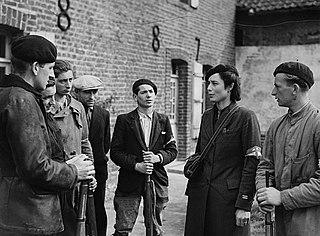
The Maquis were rural guerrilla bands of French and Belgian Resistance fighters, called maquisards, during the Nazi occupation of France in World War II. Initially, they were composed of young, mostly working-class, men who had escaped into the mountains and woods to avoid conscription into Vichy France's Service du travail obligatoire to provide forced labor for Germany. To avoid capture and deportation to Germany, they became increasingly organized into active resistance groups.

In Albania, World War II began with its invasion by Italy in April 1939. Fascist Italy set up Albania as its protectorate or puppet state. The resistance was largely carried out by Communist groups against the Italian and then German occupation in Albania. At first independent, the Communist groups united in the beginning of 1942, which ultimately led to the successful liberation of the country in 1944.

The Danish resistance movements were an underground insurgency to resist the German occupation of Denmark during World War II. Due to the initially lenient arrangements, in which the Nazi occupation authority allowed the democratic government to stay in power, the resistance movement was slower to develop effective tactics on a wide scale than in some other countries.
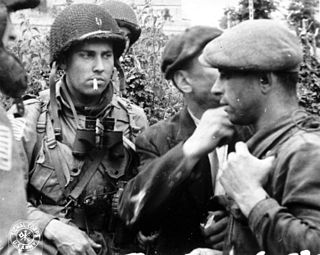
The Francs-tireurs et partisans français (FTPF), or commonly the Francs-tireurs et partisans (FTP), was an armed resistance organization created by leaders of the French Communist Party during World War II (1939–45). The communist party was neutral at first, following the Soviet Union's official view that the war was a struggle between imperialists, but changed to a policy of armed resistance against the German occupation of France after Germany invaded the Soviet Union in June 1941. Three groups were formed, consisting of party members, young communists and foreign workers. Early in 1942 they were merged to form the FTP, which undertook sabotage and assassinations of the occupation. The FTP became the best organized and most effective of the French Resistance groups. In March 1944, before the Allied forces returned to Normandy, the FTP was theoretically merged with the other Resistance groups. In practice, it retained its independence until the end of the war.
Joseph Epstein, also known as Colonel Gilles and as Joseph Andrej, was a Polish-born Jewish communist activist and a French Resistance leader during World War II. He was executed by the Germans.
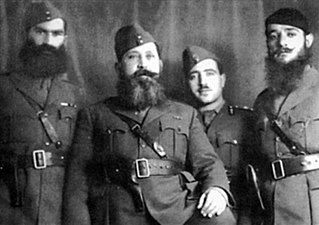
The Greek resistance, involved armed and unarmed groups from across the political spectrum that resisted the Axis occupation of Greece in the period 1941–1944, during World War II. The largest group was the Communist-dominated EAM-ELAS. The Greek Resistance is considered one of the strongest resistance movements in Nazi-occupied Europe, with partisans, known as andartes, controlling much of the countryside prior to the German withdrawal from Greece in late 1944.
Resistance movements during World War II occurred in every occupied country by a variety of means, ranging from non-cooperation to propaganda, hiding crashed pilots and even to outright warfare and the recapturing of towns. In many countries, resistance movements were sometimes also referred to as The Underground.

A partisan is a member of an irregular military force formed to oppose control of an area by a foreign power or by an army of occupation by some kind of insurgent activity.

Giustizia e Libertà was an Italian anti-fascist resistance movement, active from 1929 to 1945. The movement was cofounded by Carlo Rosselli, Ferruccio Parri, who later became Prime Minister of Italy, and Sandro Pertini, who became President of Italy, were among the movement's leaders.

The Italian Civil War was a civil war in the Kingdom of Italy fought during World War II by Italian Fascists against the Italian partisans and, to a lesser extent, the Italian Co-Belligerent Army. Many of the Italian Fascists were soldiers or supporters of the Italian Social Republic, a collaborationist puppet state created under the direction of Nazi Germany during its occupation of Italy. The Italian Civil War lasted from around 8 September 1943 to 2 May 1945. The Italian partisans and the Italian Co-Belligerent Army of the Kingdom of Italy, sometimes materially supported by the Allies, simultaneously fought against the occupying Nazi German armed forces. Armed clashes between the Fascist National Republican Army of the Italian Social Republic and the Italian Co-Belligerent Army of the Kingdom of Italy were rare, while clashes between the Italian Fascists and the Italian partisans were common; meanwhile, there was some internal conflict within the partisan movement. In this context, Germans, sometimes helped by Italian Fascists, committed several atrocities against Italian civilians and troops.

The Bulgarian Resistance was part of the anti-Axis resistance during World War II. It consisted of armed and unarmed actions of resistance groups against the Wehrmacht forces in Bulgaria and the Tsardom of Bulgaria authorities. It was mainly communist and pro-Soviet Union. Participants in the armed resistance were called partizanin and yatak.
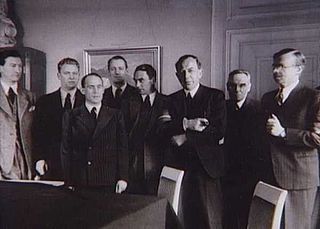
The Danish Freedom Council was a clandestine body set up in September 1943 in response to growing political turmoil surrounding the occupation of Denmark by German forces during the Second World War.
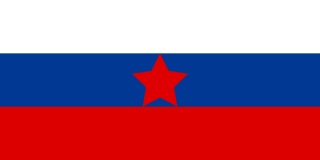
The Slovene Partisans, formally the National Liberation Army and Partisan Detachments of Slovenia, were part of Europe's most effective anti-Nazi resistance movement led by Yugoslav revolutionary communists during World War II, the Yugoslav Partisans. Since a quarter of Slovene ethnic territory and approximately 327,000 out of total population of 1.3 million Slovenes were subjected to forced Italianization since the end of the First World War, the objective of the movement was the establishment of the state of Slovenes that would include the majority of Slovenes within a socialist Yugoslav federation in the postwar period.
The Feneos Executions is the name given to a series of killings committed by the Greek People's Liberation Army (ELAS) resistance group, and especially by its secret police OPLA, in the Feneos area of Corinthia, Greece, during the first stages of the Greek Civil War, while the country was still occupied by the Axis Powers.
BOPA was part of the Danish resistance movement during World War II.
The Samsing Group was a Danish resistance group in Aarhus, Denmark active from June 1943 until 6 June 1944. The group consisted of Willy Samsing, his three brothers and 10-12 other men. The group conducted some 60 large and small sabotage actions in and around Aarhus and were the driving force behind resistance operations in the city in the early years. In addition to sabotage the group collected weapons and supplies airdropped by the allies and supplied them to other groups in Jutland. In 1944 the group was dismantled by the German authorities and its members arrested. The group worked with a loosely based group of university students that had been active since 1942.

5. Kolonne was an organization using violence and sabotage to oppose the occupation of Denmark by German forces during the Second World War. The organization was formed and based in Aarhus and with some 100 members it was one of the larger resistance groups in that area in the later years of the war. The group was created in response to the destruction of the resistance groups in Jutland by the Gestapo between late 1943 and the summer of 1944. The group functioned from June 1944 to the end of the occupation in May 1945.
Operation Animals was a World War II mission by the British Special Operations Executive (SOE), in cooperation with the Greek Resistance groups ELAS, Zeus, EDES, PAO and the United States Army Air Force. The operation took place between 21 June and 11 July 1943 and included an organized campaign of sabotage in Greece, to deceive the Axis Powers into believing that Greece was the target of an Allied amphibious landing, instead of Sicily. Despite the mission's success, the Greek civilian population suffered from mass reprisals and British intervention into the internal affairs of the Greek resistance exacerbated the tensions between its various components.
The Battle of Meligalas took place at Meligalas in Messenia in southwestern Greece, on 13–15 September 1944, between the Greek Resistance forces of the Greek People's Liberation Army (ELAS) and the collaborationist Security Battalions.
The Moldovan resistance during World War II opposed Axis-aligned Romania and Nazi Germany, as part of the larger Soviet partisan movement. The Moldavian Soviet Socialist Republic (MSSR), presently Moldova, had been created in August 1940 after a Soviet annexation, and retaken by Romania during Operation Barbarossa. Moldovan resistance straddled across a new administrative border: in 1941–1944, Bessarabia was reincorporated within Romania as a semi-autonomous governorate, while areas across the Dnister were administered into a separate Transnistria Governorate. Shortly after the German–Romanian invasion of June–July 1941, the Communist Party of Moldavia (PCM) ordered the creation of a partisan network. The order was largely ineffective in creating an organized movement due to the rapid disintegration of Soviet territorial structures in Bessarabia. Some early organizers opted to abandon their posts, and Soviet attempts to infiltrate experienced partisans across the front line were often annihilated by the Special Intelligence Service. Nevertheless, partisan formations were still able to stage large-scale attacks on the Romanian infrastructure, at Bender and elsewhere. While Romanian documents identified categories of locals influenced by communist ideas as a passive component of the resistance, various modern commentators point to the overall unpopularity of communism in Bessarabia as accounting for the movement's marginality.













